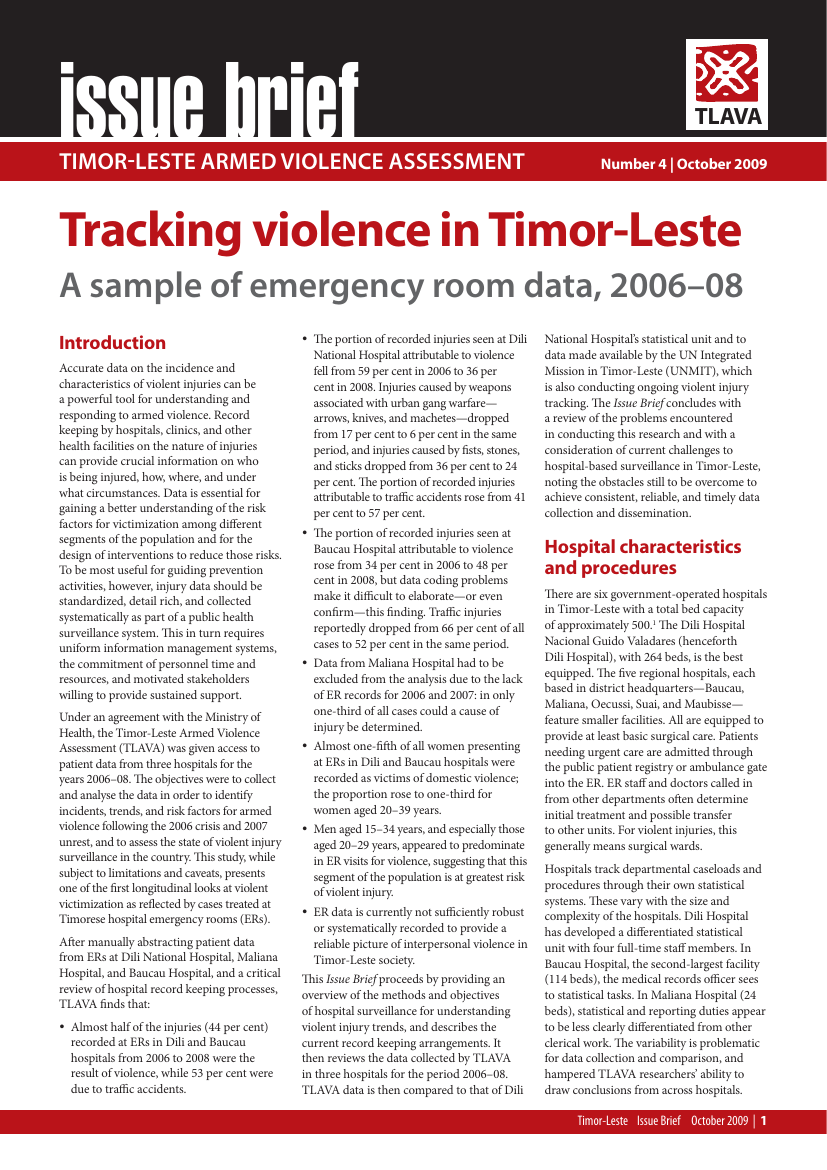
Tracking violence in Timor-Leste A sample of emergency room data, 2006–08 (TLAVA Issue Brief 4)
Accurate data on the incidence and characteristics of violent injuries can be a powerful tool for understanding and responding to armed violence. Record keeping by hospitals, clinics, and other health facilities on the nature of injuries can provide crucial information on who is being injured, how, where, and under what circumstances. Data is essential for gaining a better understanding of the risk factors for victimization among diff erent segments of the population and for the design of interventions to reduce those risks. To be most useful for guiding prevention activities, however, injury data should be standardized, detail rich, and collected systematically as part of a public health surveillance system. This in turn requires uniform information management systems, the commitment of personnel time and resources, and motivated stakeholders willing to provide sustained support.
Under an agreement with the Ministry of Health, the Timor-Leste Armed Violence Assessment (TLAVA) was given access to patient data from three hospitals for the years 2006–08. The objectives were to collect and analyse the data in order to identify incidents, trends, and risk factors for armed violence following the 2006 crisis and 2007 unrest, and to assess the state of violent injury surveillance in the country. Tracking violence in Timor-Leste A sample of emergency room data, 2006–08, while subject to limitations and caveats, presents one of the first longitudinal looks at violent victimization as reflected by cases treated at Timorese hospital emergency rooms (ERs).
Also available in TETUM.
Have your say about Small Arms Survey publications and products: take 5 minutes to fill out our questionnaire.